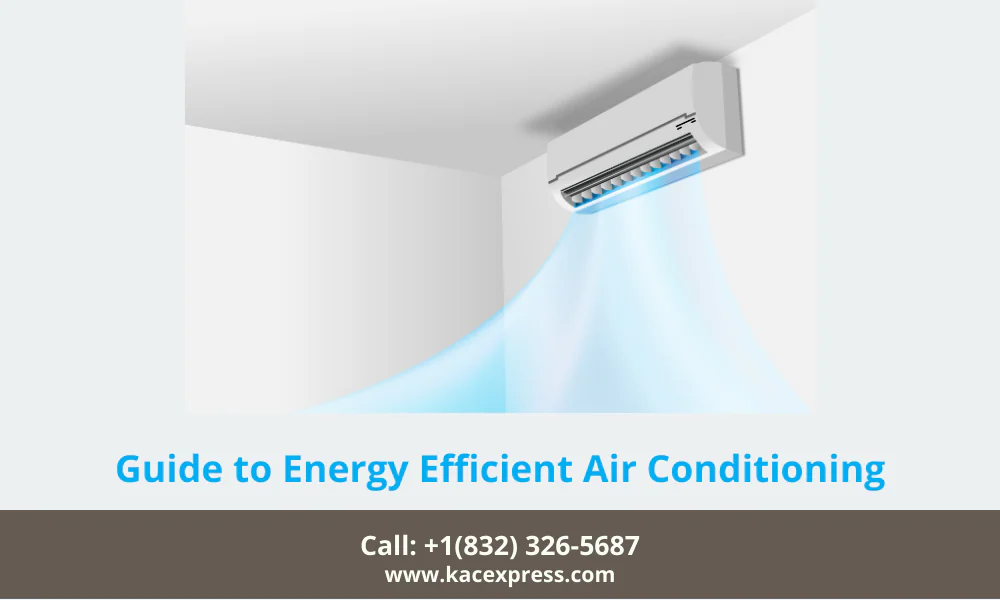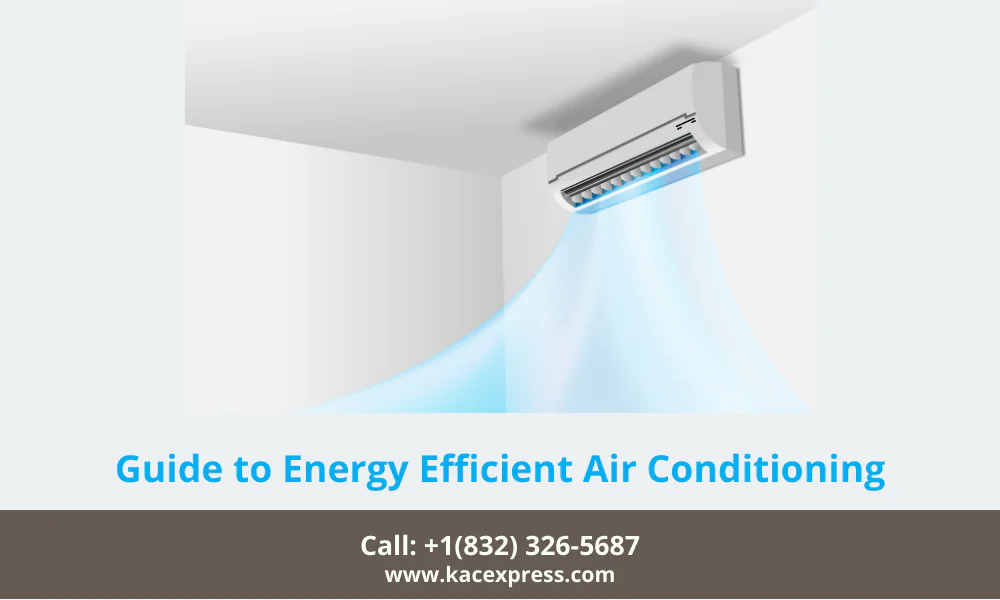When summer arrives, your air conditioner becomes the savior of your home. Everyone appreciates relief from the summer heat and humidity, but it shouldn’t come at an exorbitant cost. Using an energy-efficient air conditioner is one of the most powerful ways to control cooling costs.

This article will guide you through the most critical steps in deciding your cooling requirements and selecting the most energy-efficient air conditioner for your home.
Different Types of Air Conditioners
The same cooling technology is used for central air conditioning, mini-split systems, and window units, but they’re designed for different living conditions. One form of air conditioning could be a much better match for your home and budget than the others.
Central Air Conditioner
A central air conditioner is intended to cool several rooms, and in most cases, an entire building, all at once. The air conditioner circulates cool air through a series of ducts and vents until the indoor air reaches the temperature set on the thermostat, which is regulated by a wall-mounted thermostat.
A condenser, compressor, and evaporator are the three key components of a central air conditioner. Between the outdoor condenser and the indoor evaporator, liquid refrigerant circulates through copper tubing, absorbing heat from the house. The heat vaporizes the refrigerant, which is then sent to the compressor and pressurized to allow the heat to be expelled outside. The refrigerant is then depressurized and turned back into a liquid, which cools as it returns to the evaporator. A fan circulates cool air in the house by blowing air over the cold evaporator coils and into the duct system.
Pros of central air conditioning:
- A professionally designed device should maintain a constant temperature across the entire house.
- Central air systems are usually quieter than window units and mini-split systems since the noisiest sections of the system are typically located outside, in attics, basements, or utility rooms.
- Central air conditioners clean and replace the indoor air regularly, eliminating irritants, allergens, pollen, and even pet hair.
Cons:-
- The cost of installing ductwork is often higher than installing a central air system, making central air a costly option for updating older homes.
- Central air conditioning is usually the most costly choice in terms of purchasing and installation instead of window units and small-scale mini-split installations.
Mini-Split Systems
Mini-split systems use the same essential technologies as central air conditioning to absorb heat and deliver cool air, but their design is drastically different. Each cooled room has its evaporator and fan unit, which is usually placed high on the wall. All of these systems share the outdoor condenser and compressor unit.
Pros of mini-split systems:
- Zone control: Since each evaporator and fan has its thermostat, you can save money by setting the temperature high in unoccupied rooms.
- Mini-split systems could be a more cost-effective option for home additions or retrofitting older homes with central air because they don’t need ductwork.
Cons:-
- Mini-split systems are less energy-efficient than central air systems in general. Since there is no cooling loss through ductwork and consumers have zone control, homeowners will make up for the difference by being more disciplined with their thermostats.
- The cost of each evaporator unit rises, so installation can be more costly than with central air, depending on how many rooms you want to cool.
Window unit
These air conditioners are one of the most used AC units worldwide.
Pros of window units:
- Window units are less costly to purchase than central air or mini-split systems, and they do not require skilled installation.
- High-efficiency window units are usually not much more expensive, but they can save you a lot of money over time.
Cons:-
- Windows units obscure the view of the outside and spill condensation on the hardwood flooring below, something not all homeowners appreciate.
- Window units would be louder than the alternatives because all of the elements are so close to your living room.
- Improper installation may lead to a leaky seal around the window unit, allowing warm air and possibly pests to get inside.
What to Look for When Buying a New, Energy-Efficient Air Conditioner
When buying a new energy-efficient air conditioner, there are a few main features to look for that will help keep your energy bill and the temperature in your home low.
Features to Look for When Choosing an Air Conditioner:
Unit size according to space: – When it comes to air conditioners, size matters. A device that is too big will cool the air, but it will be damp and clammy. A unit that is too small would have to work extra hard to maintain the set temperature, increasing your energy bill. The most significant thing to remember is the size of the air conditioner.
Programmable temperature settings: – Today, even the window units have digital screens, allowing you to set a specific temperature and even schedule your air conditioning to turn off when you leave and on when you return. Central air systems are frequently even more flexible.
Energy-saving setting:- Another feature to look for in the best air conditioners is an energy-efficient setting, which ensures that once your room has cooled down, the unit can turn off both the compressor and the fan, saving energy.
High EER and SEER ratings:- These two ratings are related (but not interchangeable) measures of a unit’s energy efficiency measured in BTUs. Meanwhile, EER and SEER stand for “energy efficiency rating” and “seasonal energy efficiency rating,” respectively. SEER and EER ratings are available for both room and central air conditioners, and a higher rating indicates greater quality.
ENERGY STAR® certification: When selecting the right air conditioner for your house, look for the blue ENERGY STAR® certification. It indicates that this device has reached or surpassed higher performance requirements than similar models.
Bottom line
Modern air conditioners are becoming more energy-efficient and user-friendly as technology advances. Air conditioners are more advanced and energy-efficient than they have ever been. They are available in various styles and sizes to suit every living situation, making finding the right air conditioner for your home easy.


0 Comments